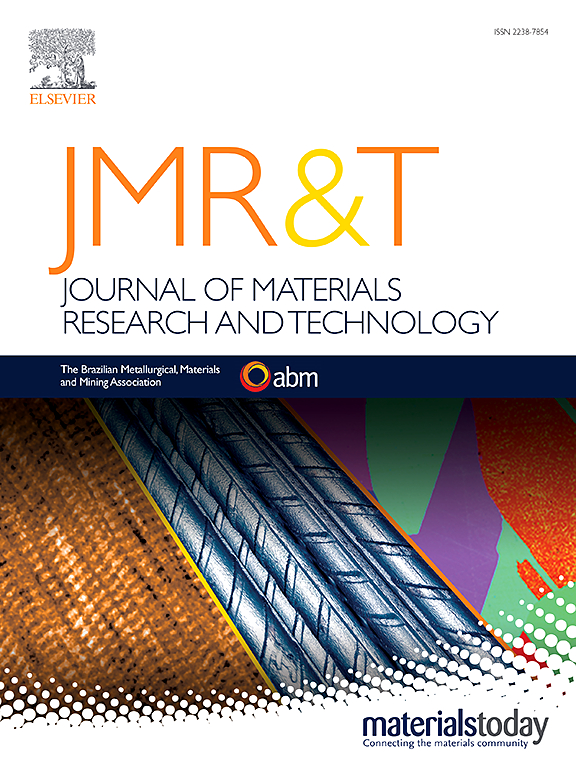Enhancement of wear resistance in TC6 titanium alloy through a combined treatment of laser shock peening and nitrogen ion implantation at 300 °C
IF 6.2
2区 材料科学
Q1 MATERIALS SCIENCE, MULTIDISCIPLINARY
Journal of Materials Research and Technology-Jmr&t
Pub Date : 2025-03-13
DOI:10.1016/j.jmrt.2025.03.115
引用次数: 0
Abstract
The TC6 titanium alloy was subjected to a combined treatment of laser shock peening (LSP) followed by nitrogen ion implantation at 300 °C. The effects of this combined treatment on the microstructure, surface mechanical properties, and tribological behaviors of TC6 were evaluated. The TC6 alloy demonstrated a gradient distribution in grain size and elemental composition in its surface after the combined treatment. Compared to untreated TC6, the surface nano-hardness increased from 4.95 GPa to 7.08 GPa after nitrogen ion implantation at 300 °C, 5.91 GPa after LSP treatment, and 7.70 GPa after combined treatment. The surface residual stress changed from an initial tensile stress of 50.60 MPa to a compressive stress of 42.41 MPa after nitrogen ion implantation at 300 °C, 875.10 MPa after LSP, and 735.99 MPa after combined treatment. These changes in microstructure and surface mechanical properties were attributed to the synergistic effects of the combined treatment. For the tribological behavior, the wear rate of TC6 after combined treatment was the lowest among all states. The wear mechanism changed to milder adhesive wear from severe abrasive wear and adhesive wear in untreated state, which was attributed to the formation of nanocrystals and nitrides in the surface as well as the increase in surface dislocation density.
300℃激光冲击强化与氮离子注入复合处理对TC6钛合金耐磨性的增强
对TC6钛合金进行了激光冲击强化(LSP)和氮离子注入(300℃)联合处理。评价了复合处理对TC6显微组织、表面力学性能和摩擦学行为的影响。复合处理后的TC6合金表面晶粒尺寸和元素组成呈梯度分布。与未处理的TC6相比,300℃氮离子注入后的表面纳米硬度从4.95 GPa提高到7.08 GPa, LSP处理后的表面纳米硬度为5.91 GPa,联合处理后的表面纳米硬度为7.70 GPa。300℃氮离子注入后,表面残余应力由初始拉应力50.60 MPa变为压缩应力42.41 MPa, LSP后为875.10 MPa,复合处理后为735.99 MPa。这些微观组织和表面力学性能的变化归因于复合处理的协同作用。在摩擦学行为方面,综合处理后TC6的磨损率最低。磨损机制由未处理状态下的严重磨粒磨损和黏着磨损转变为较轻的黏着磨损,这是由于表面纳米晶和氮化物的形成以及表面位错密度的增加所致。
本文章由计算机程序翻译,如有差异,请以英文原文为准。
求助全文
约1分钟内获得全文
求助全文
来源期刊

Journal of Materials Research and Technology-Jmr&t
Materials Science-Metals and Alloys
CiteScore
8.80
自引率
9.40%
发文量
1877
审稿时长
35 days
期刊介绍:
The Journal of Materials Research and Technology is a publication of ABM - Brazilian Metallurgical, Materials and Mining Association - and publishes four issues per year also with a free version online (www.jmrt.com.br). The journal provides an international medium for the publication of theoretical and experimental studies related to Metallurgy, Materials and Minerals research and technology. Appropriate submissions to the Journal of Materials Research and Technology should include scientific and/or engineering factors which affect processes and products in the Metallurgy, Materials and Mining areas.
 求助内容:
求助内容: 应助结果提醒方式:
应助结果提醒方式:


